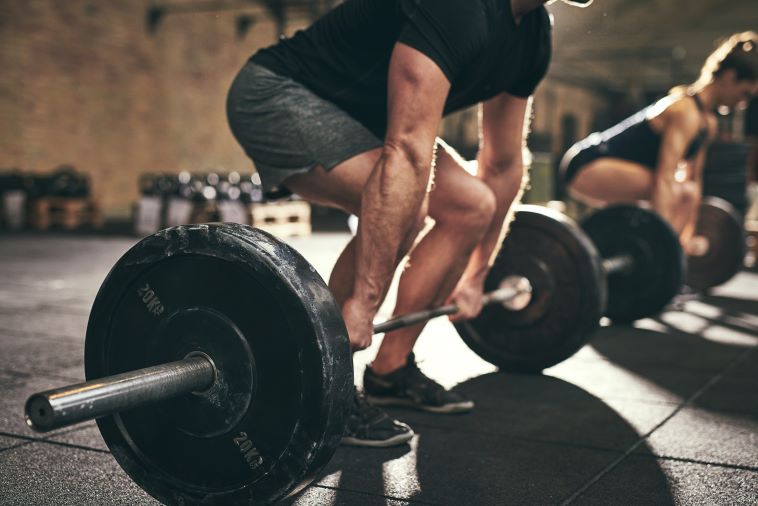For the team sport athlete the off-season can be considered the most important time in the calendar in terms of making physical changes that can impact on performance. Following a hectic schedule in the cricket season our players are given a 6-week break to rest – physically and mentally.
With as much as 5 days competitive cricket a week, plus training sessions, time away from the sport can be a necessity. During this time players will perform very much unstructured physical training with the aim of off-loading the body while maintaining mobility and base strength levels.
When players return mid November an 8-week window is available to target changes in muscle size and strength without the interference of cricket skills training.
The following article is going to identify the considerations when programming for changes in muscle cross-sectional area and hopefully stimulate some thought to your current training program.
Programming considerations.
Intensity – The weight lifted.
It is common to see training loads representing 70 – 85% of one rep max (6-12 repetitions) applied to resistance training. However it is important to take into account your training experience when using this approach for hypertrophy. Strength trained athletes, the guys who have a solid history of training behind them, respond better to loads greater than 90% 1RM (Fry, 2004), especially when targeting type II fibers (the fast athletic ones).
With our players their resistance training programs are tailored to each individual taking into account their age, training history and what will benefit them in their role within the team. For a young player new to the program, loads at the lower end of the scale (70%) will provide enough of a stimulus to promote adaptations; whereas an experienced player with several years strength training history will work more towards the 90% range.
So if you have been training for a few years and have found you have stalled in progress try a block of higher intensity training, it can be taxing mentally, but rewarding physically.
Volume – The work performed.
Volume is defined as the total work performed, typically in kilograms, as a product of sets, repetitions and load. Greater volume protocols have shown to heighten metabolic stress, increase muscle damage and increase the working muscles time under tension. In turn this has been shown to cause elevated acute testosterone (Kraemer et al., 1990) and also mediate the acute release of growth hormone (Hoffman et al., 2003).
In the 8-week period from November, players can be exposed to greater resistance-training volume due to the fact they are not required to perform skills based training.
As highlighted, metabolic stress and muscle damage are important in stimulating muscle growth, but can have a negative impact on performance due to the resulting fatigue and muscle soreness so we have to be smart with timing of this type of training. Multiple sets, a slower eccentric component of lifts and metabolic conditioning are all methods used to create a greater volume of training.
Most of you will be using multiple sets in training but have possibly not tried changing your rep tempo. Next time you perform your session try adding one additional set of 10 – 12 reps at 60% your 1RM with a 3 – 4 second eccentric portion of the lift to really stress the working muscles.
Rest intervals – The time between working sets.
Short rest intervals are responsible for the metabolic build-up impacting on a hypertrophic response (Willardson, 2006). A combination of ‘moderate’ (60 – 90s) rest and multiple sets has been identified as optimum for creating hypoxia (Toigo & Boutellier, 2006) and a large spike in anabolic hormone concentrations (Kraemer et al., 1990), resulting in increased muscle growth.
A typical approach with our athletes will be to manipulate the rest depending on the goal of the exercise within the hypertrophy-training block.
Let’s take legs for example, when performed with the correct technique squats can be extremely beneficial in increasing muscle size, however reducing the rest can impact on the technique of an inexperienced athlete significantly due to the large neuromuscular demand of the lift (thought process during the lift).
So for this exercise, with this lifter, we might use a full recovery of approximately 3 minutes; but hang on we are not creating the ‘stress’ of short rest. Therefore we would include additional sets with short rest (60 seconds) using a leg press or fixed machine where fatigue cannot lead to potential injury.
Be smart when training to high levels of fatigue/ failure and ensure you select an exercise method that is appropriate to your level of experience/ history.
Conclusion
Hopefully this has stimulated some thought on ways of adjusting your training and furthered understanding of training to increase muscle mass. The three primary take away factors from this are:
- Mechanical tension – sufficient tension for hypertrophy is achieved with using loads between 70 – 95%.
- Muscle damage – heavy loads and eccentric muscle action has been identified as primary importance for achieving this.
- Metabolic stress – this is achieved through manipulating rest periods along with using multiple sets.
When training for muscle hypertrophy it’s important to aid the process of repair and recovery.
At Glamorgan many of our players use INFORMED WHEY® and AFTERMATH™ post-workout to ensure they are consuming a quality source of protein to feed their muscles and support the rebuilding process.
With the Informed Sport accreditation, I am assured that the supplements are free of any banned substances too, which is vital within our sport.
About the author
Tom Turner is the lead strength & conditioning coach at Glamorgan county cricket club. With an MSc in Strength & Conditioning under his belt, he is continually keeping his head in research in order to ensure that he is giving his players the best support possible. As you would expect he enjoys his training and has a keen interest in the role of diet and nutrition in both performance and physical development. @tomturner90



